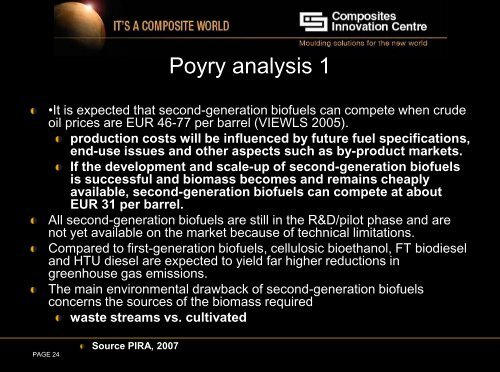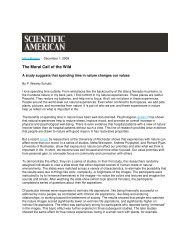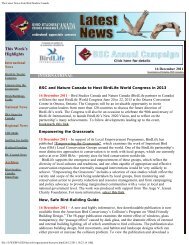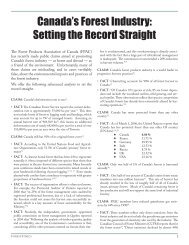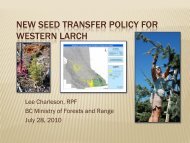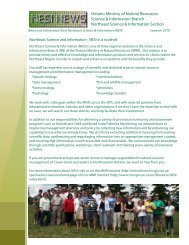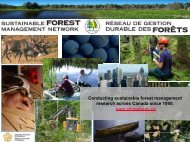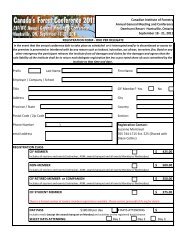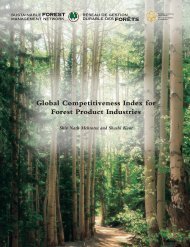Manitoba and the Emerging Bioeconomy
Manitoba and the Emerging Bioeconomy
Manitoba and the Emerging Bioeconomy
Create successful ePaper yourself
Turn your PDF publications into a flip-book with our unique Google optimized e-Paper software.
Poyry analysis 1<br />
•It is expected that second-generation biofuels can compete when crude<br />
oil prices are EUR 46-77 per barrel (VIEWLS 2005).<br />
production costs will be influenced by future fuel specifications,<br />
end-use issues <strong>and</strong> o<strong>the</strong>r aspects such as by-product markets.<br />
If <strong>the</strong> development <strong>and</strong> scale-up of second-generation biofuels<br />
is successful <strong>and</strong> biomass becomes <strong>and</strong> remains cheaply<br />
available, second-generation biofuels can compete at about<br />
EUR 31 per barrel.<br />
All second-generation biofuels are still in <strong>the</strong> R&D/pilot phase <strong>and</strong> are<br />
not yet available on <strong>the</strong> market because of technical limitations.<br />
Compared to first-generation biofuels, cellulosic bioethanol, FT biodiesel<br />
<strong>and</strong> HTU diesel are expected to yield far higher reductions in<br />
greenhouse gas emissions.<br />
The main environmental drawback of second-generation biofuels<br />
concerns <strong>the</strong> sources of <strong>the</strong> biomass required<br />
waste streams vs. cultivated<br />
PAGE 24<br />
Source PIRA, 2007


